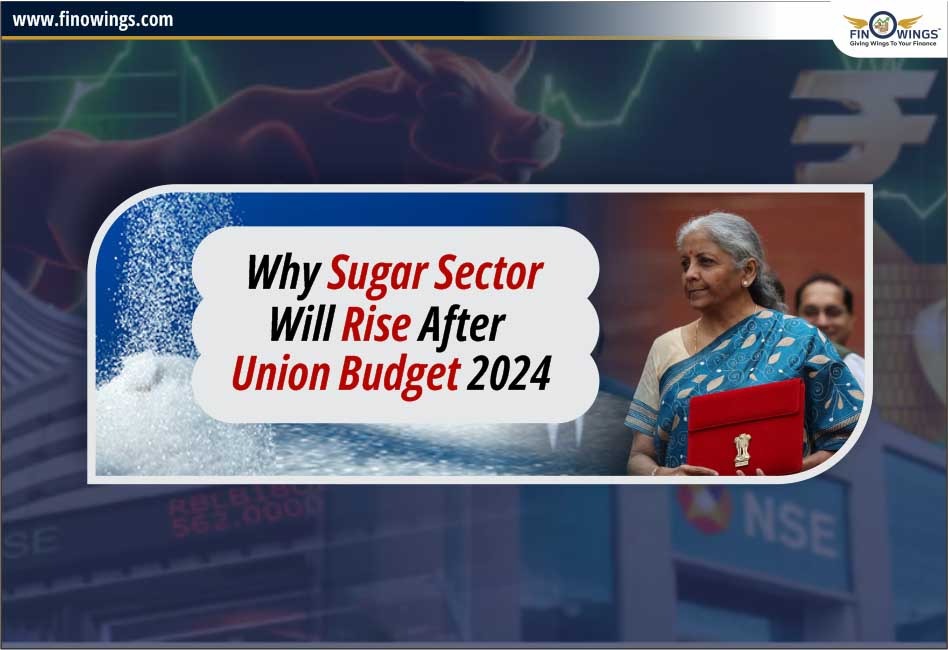Home >> Blog >> Why Sugar sector will Rise after Union budget 2024
Why Sugar sector will Rise after Union budget 2024

Table of Contents
- Introduction to India's Sugar Industry
- The Importance of Ethanol Blending
- Phase One: Achieving 10% Blending
- Phase Two: Scaling Up to 20% Blending
- Challenges and Opportunities
- Impact on Profit Levels
- Government Initiatives and Policies
- The Role of Technology
- Sustainability and Environmental Impact
- Conclusion
Introduction to India's Sugar Industry
The Indian sugar industry plays a crucial role in the rural economy. It is not only a significant source of employment but also a vital component of the agricultural sector. The industry's importance extends beyond just sugar production; it is now a key player in the clean energy supply chain through ethanol blending.
This shift towards ethanol blending is poised to be a game-changer for the energy sector. By converting sugarcane into ethanol, the industry is providing a sustainable and eco-friendly alternative to traditional fuels. This transition is not just beneficial for the environment but also for the companies involved in this sector.
The Importance of Ethanol Blending
Ethanol blending involves mixing ethanol with gasoline to reduce the consumption of fossil fuels. This process is crucial for several reasons:
- Reduces carbon emissions
- Promotes sustainable energy
- Decreases dependency on oil imports
- Boosts rural economy
The current target for ethanol blending in India is set at 10%. However, the government aims to increase this to 20% within the next two years. This ambitious target will be achieved in two phases, with each phase bringing its own set of challenges and opportunities.
Detailed Video:
Phase One: Achieving 10% Blending
The first phase aims to achieve a 10% ethanol blending target. This phase is critical as it sets the foundation for future advancements. Several steps are involved in this process:
- Increasing ethanol production
- Enhancing supply chain efficiency
- Ensuring quality control
- Collaborating with oil companies
During this phase, the focus is on ramping up ethanol production to meet the blending requirements. This involves investing in new technologies and infrastructure to ensure a steady supply of ethanol. Additionally, quality control measures are put in place to maintain the consistency and safety of the blended fuel.
Phase Two: Scaling Up to 20% Blending
The second phase aims to scale up ethanol blending to 20%. This phase is more complex and requires a multi-faceted approach. Key steps include:
- Expanding production capacity
- Improving logistics and distribution
- Adopting advanced technologies
- Strengthening regulatory framework
In this phase, the focus is on expanding the production capacity to meet the higher blending targets. This involves setting up new ethanol plants and upgrading existing ones. Additionally, improving logistics and distribution networks is crucial to ensure the timely delivery of ethanol to blending facilities.
Challenges and Opportunities
The transition to higher ethanol blending levels presents several challenges and opportunities for the sugar sector. Some of the challenges include:
- High initial investment
- Technical complexities
- Regulatory hurdles
- Market volatility
Despite these challenges, the opportunities are immense. The shift towards ethanol blending opens up new revenue streams for sugar companies. It also provides a sustainable solution to the energy crisis and promotes rural development.
Impact on Profit Levels
The transition to ethanol blending is expected to have a significant impact on the profit levels of companies in the sugar sector. By diversifying their product offerings, these companies can tap into new markets and increase their revenue. Some of the benefits include:
- Higher profit margins
- Reduced operational costs
- Increased market share
- Enhanced brand reputation
Moreover, the government's support in the form of subsidies and incentives further boosts the profitability of these companies. By investing in ethanol production, sugar companies can achieve long-term financial stability and growth.
Government Initiatives and Policies
The Indian government has introduced several initiatives and policies to promote ethanol blending. These include:
- Subsidies for ethanol production
- Tax incentives for blending facilities
- Regulatory support
- Public awareness campaigns
These initiatives are aimed at encouraging more companies to invest in ethanol production. They also aim to create a favorable regulatory environment that supports the growth of the ethanol blending sector.
The Role of Technology
Technology plays a crucial role in the transition to ethanol blending. Advanced technologies are being adopted to improve the efficiency and effectiveness of ethanol production. Some of the key technologies include:
- Biochemical conversion
- Fermentation processes
- Distillation techniques
- Quality control systems
These technologies help in optimizing the production process and ensuring the quality of the final product. They also enable companies to scale up their operations and meet the increasing demand for ethanol.
Sustainability and Environmental Impact
Ethanol blending has a positive impact on the environment. By reducing the consumption of fossil fuels, it helps in lowering carbon emissions. Some of the environmental benefits include:
- Reduced greenhouse gases
- Lower air pollution
- Conservation of natural resources
- Promotion of renewable energy
Moreover, ethanol is biodegradable and less toxic compared to traditional fuels. This makes it a safer and more sustainable alternative for the future.
Conclusion
The Indian sugar sector is at the forefront of the ethanol blending revolution. This transition presents numerous opportunities for growth and development. By investing in ethanol production, sugar companies can achieve higher profit levels and contribute to a sustainable future.
The government's support and the adoption of advanced technologies further enhance the potential of this sector. As the country moves towards higher blending targets, the sugar industry will continue to play a pivotal role in the clean energy supply chain.
In conclusion, the shift towards ethanol blending is a win-win situation for both the environment and the economy. It promotes sustainable energy, boosts rural development, and provides new revenue streams for the sugar sector. The future of India's sugar industry looks promising with the continued focus on ethanol blending.
Frequently Asked Questions
The Indian sugar industry is crucial for ethanol blending, converting sugarcane into ethanol to reduce carbon emissions and reliance on fossil fuels.
Ethanol blending reduces greenhouse gas emissions, lowers air pollution, and conserves natural resources by providing a renewable alternative to traditional fuels.
Ethanol blending boosts rural economies by creating jobs, increasing income for sugarcane farmers, and promoting sustainable agricultural practices.
The Indian government offers subsidies, tax incentives, and regulatory support to encourage ethanol production and blending, aiming to increase the blend rate to 20% by 2025.
Technologies like biochemical conversion, advanced fermentation, and distillation techniques enhance ethanol production efficiency and quality, supporting industry growth.



















